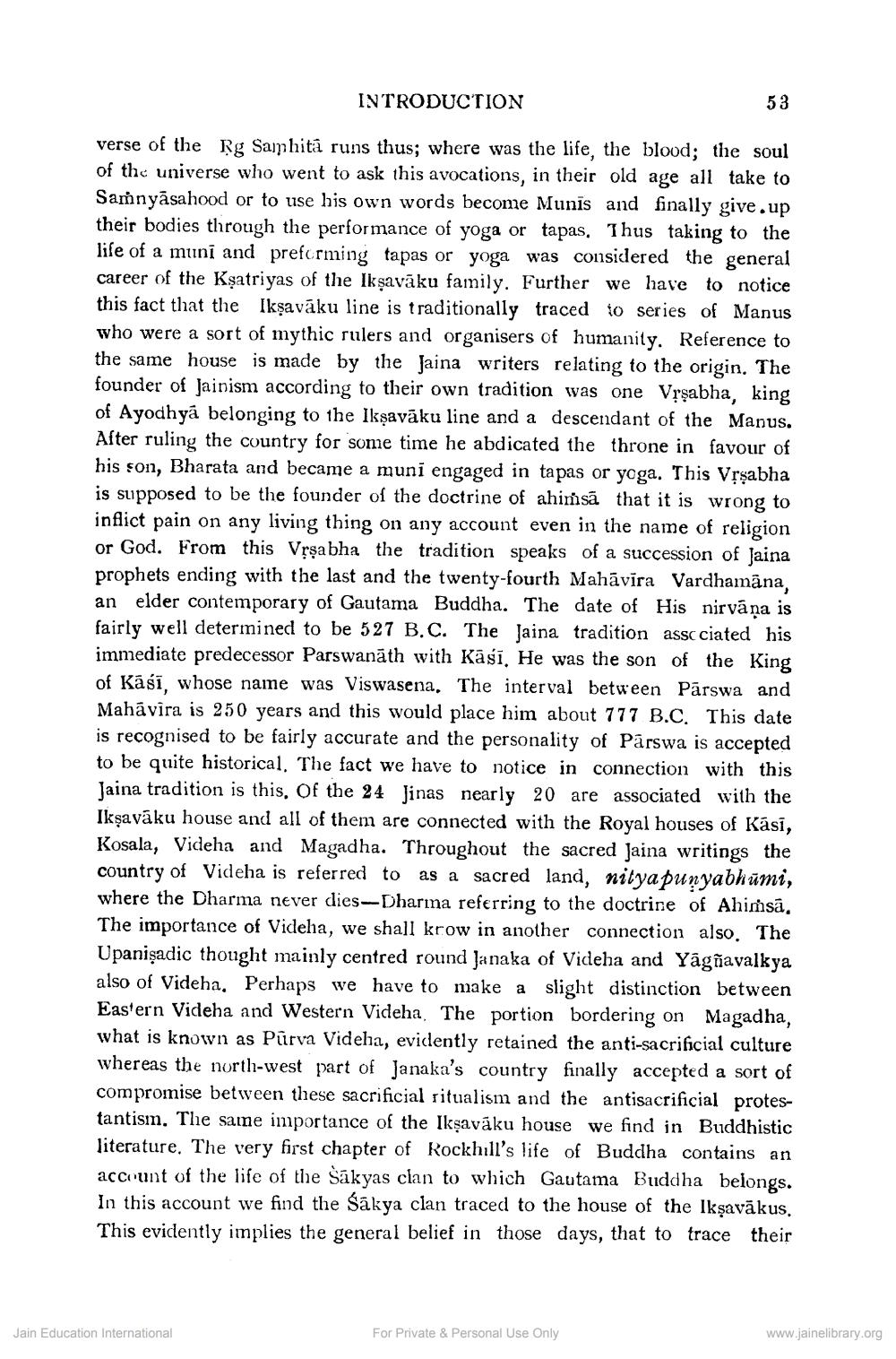________________
INTRODUCTION
53
verse of the Rg Samhitā runs thus; where was the life, the blood; the soul of the universe who went to ask this avocations, in their old age all take to Samnyāsahood or to use his own words become Munīs and finally give up their bodies through the performance of yoga or tapas. Thus taking to the life of a muni and preforming tapas or yoga was considered the general career of the Ksatriyas of the Iksavāku family. Further we have to notice this fact that the Ikşaváku line is traditionally traced to series of Manus who were a sort of mythic rulers and organisers of humanity. Reference to the same house is made by the Jaina writers relating to the origin. The founder of Jainism according to their own tradition was one Vrşabha, king of Ayodhyā belonging to the Ikşavāku line and a descendant of the Manus. After ruling the country for some time he abdicated the throne in favour of his son, Bharata and became a muni engaged in tapas or yoga. This Vrsabha is supposed to be the founder of the doctrine of ahins that it is wrong to inflict pain on any living thing on any account even in the name of religion or God. From this Vrşabha the tradition speaks of a succession of Jaina prophets ending with the last and the twenty-fourth Mahāvira Vardhamana. an elder contemporary of Gautama Buddha. The date of His nirvana is fairly well determined to be 527 B.C. The Jaina tradition assc ciated his immediate predecessor Parswanāth with Kāsi. He was the son of the King of Kāśi, whose name was Viswasena. The interval between Pārswa and Mahavira is 250 years and this would place him about 777 B.C. This date is recognised to be fairly accurate and the personality of Pārswa is accepted to be quite historical. The fact we have to notice in connection with this Jaina tradition is this, Of the 24 Jinas nearly 20 are associated with the Iksavāku house and all of them are connected with the Royal houses of Kási, Kosala, Videha and Magadha. Throughout the sacred Jaina writings the country of Videha is referred to as a sacred land, nitya punyabhumi, where the Dharma never dies-Dharina referring to the doctrine of Ahimsā. The importance of Videha, we shall krow in another connection also. The Upanişadic thought mainly centred round Janaka of Videha and Yâgñavalkya also of Videha. Perhaps we have to make a slight distinction between Eastern Videha and Western Videha. The portion bordering on Magadha, what is known as Purva Videha, evidently retained the anti-sacrificial culture whereas the north-west part of janaka's country finally accepted a sort of compromise between these sacrificial ritualism and the antisacrificial protestantism. The same importance of the Ikşavāku house we find in Buddhistic literature. The very first chapter of Rockhill's life of Buddha contains an account of the life of the Sakyas clan to which Gautama Buddha belongs. In this account we find the Sākya clan traced to the house of the Ikşavākus, This evidently implies the general belief in those days, that to trace their
Jain Education International
For Private & Personal Use Only
www.jainelibrary.org




